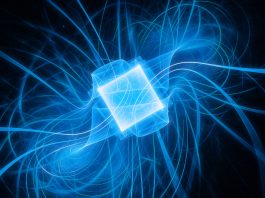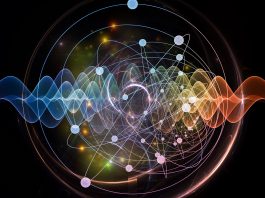A collaborative research team including Chalmers University of Technology (CUT), has presented results that cast new light on important challenges in understanding novel quantum gravity theory.
Scientists have been hypothesising the possibility of explaining Einstein’s theory of gravity through quantum mechanics applications for decades. This is because it is believed that in doing so successfully, it will reveal ‘secrets’ about the universe, such as black holes and the birth of the universe itself, that researchers have been contemplating for years. It has not been until recently that this has been made somewhat possible through the quantum gravity theory.
What is the quantum gravity theory?
A challenge in modern theoretical physics is discovering a ‘unified theory’ that can essentially consider all the laws of nature within a single framework—such as connecting Einstein’s general theory of relativity, which describes the universe on a large scale, and quantum mechanics, which describes our world at the atomic level. This is because such a theory of ‘quantum gravity’ would include both a macroscopic and microscopic description of nature.
Daniel Persson, Professor at the Department of Mathematical Sciences at CUT explained: “We strive to understand the laws of nature and the language in which these are written is mathematics.
“When we seek answers to questions in physics, we are often led to new discoveries in mathematics too. This interaction is particularly prominent in the search for quantum gravity – where it is extremely difficult to perform experiments.”
An example of a phenomenon that requires this type of unified description is black holes. A black hole forms when a star that is significantly heavy expands and collapses under its own gravitational force, so that all its mass is concentrated in an extremely small volume. The quantum mechanical description of black holes is still in its infancy; however, it does involve advanced mathematics.
How have scientists simplified this phenomenon?
Robert Berman, Professor at the Department of Mathematical Sciences at CUT said: “The challenge is to describe how gravity arises as an ‘emergent’ phenomenon.
“Just as everyday phenomena – such as the flow of a liquid – emerge from the chaotic movements of individual droplets, we want to describe how gravity emerges from quantum mechanical system at the microscopic level.”
In an article recently published in the journal Nature Communications, Daniel Persson and Robert Berman, together with Tristan Collins of MIT in the USA, portrayed how gravity emerges from a special quantum mechanical system, in a simplified model for quantum gravity called the ‘holographic principle.’
“Using techniques from the mathematics that I have researched before, we managed to formulate an explanation for how gravity emerges by the holographic principle, in a more precise way than has previously been done,” noted Berman.
What does this reveal about dark energy?
This new article may also offer a new insight into mysterious dark energy. In Einstein’s general theory of relativity, gravity is described as a geometric phenomenon, where in which heavy objects can bend the geometric shape of the universe.
According to Einstein’s theory, even the empty space – or the ‘vacuum state’ of the universe – has a rich geometric structure. If you could zoom in and look at this vacuum on a microscopic level, you would see quantum mechanical fluctuations or ripples, known as dark energy. It is this mysterious form of energy that, from a larger perspective, is responsible for the accelerated expansion of the universe.
This groundbreaking research could potentially lead to new insights into how and why these microscopic quantum mechanical ripples arise. It also has the potential to give more detail into the relationship between Einstein’s theory of gravity and quantum mechanics, something that has eluded scientists for decades.
“These results open up the possibility to test other aspects of the holographic principle such as the microscopic description of black holes. We also hope to be able to use these new connections in the future to break new ground in mathematics,” concluded Persson.
The scientific article, ‘Emergent Sasaki-Einstein geometry and AdS/CFT’ is published in Nature Communications and is collaboratively written by Robert Berman, Tristan Collins and Daniel Persson at CUT, Sweden, and MIT, USA.
To keep up to date with our content, subscribe for updates on our digital publication and newsletter.









